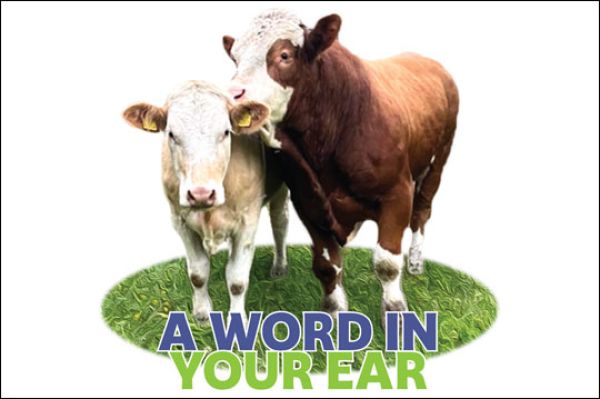
Matt O'Keeffe
Editor
Watching the weathervane

We have now passed mid-summer, and the weather continues to cooperate with farming, for now, anyway. As the most talked about subject in Irish society, the influence of weather on the Irish psyche is quite incredible. It is deemed to be a major mood changer, from irrational exuberance to intense melancholy. Our expectations in relation to weather prospects are always over-optimistic, with a permanent expectation that a previous, perfectly sunny summer of even a decade ago is about to repeated, when, in fact, sunny, dry summers are the exception, rather than the norm. The past six months have been exceptional, weatherwise, by any standard. Month on month, farmers were able to plan and work without the severe disruptions we normally expect to impact farming activities. Livestock went out to graze early, with grass growth rates well above average right through the Spring. Good ground conditions allowed good sward clean-outs and near perfect regrowths. Tillage farmers planted early in optimum conditions. Winter crops, sown and established in a near perfect Autumn scenario are expected to deliver bumper yields.
Too good to last
A pessimist would suggest that things are just too good to hold. Livestock prices are at last matching and exceeding production costs and milk yields have allowed dairy processors to operate at full capacity during peak production, with all the benefits that delivers to the bottom line, and, ultimately, to producer prices. The pessimist will insist that we have experienced it all before, and it may all end in tears. That could well be, but it is not a reason not to enjoy and exploit the benign weather conditions we have enjoyed over the past months. Given half a chance, farmers make the most of any positivity that comes along, whether that’s climatic or economic. Grass reseeding is a prime example. After several years of poor spring soil conditions restricting reseeding plans, this year has seen a near record acreage of reseeding completed. Allied to good weather conditions, improved farmgate prices have allowed farmers to invest in their most valuable resource. So far, so good. Weather is unpredictable and drought or deluge may yet derail or at least arrest farmer optimism over the coming months.
Weather tech
Meanwhile, weather forecasting technology continues to improve. This writer has two weather apps on his phone as well as regular consultations with Carlow Weather, the Alan O’Reilly-driven forecasting service. We can now get a dependable three-to-four-day localised forecast that allows some degree of planning to accommodate whatever nature may throw our way. Forecasting technology, especially for a small island on the edge of the North Atlantic, is still some way from accurately predicting weather patterns further than a week out. Given the immense complexities of our atmosphere and geographical location, long term definitive forecasting may never become a reality, but gradually, incrementally, forecasts up to fourteen days ahead are becoming at least ‘guesstimates’ of what lies ahead. While the marriage of farming and forecasting is still imperfect, it has allowed farmers to make critical decisions based on meteorological science. If the wind is going to die down by 6pm, then that is the time to spray. If there is the proverbial weather window extending ahead for three days, silage and grain can be harvested, and grazing management can be accommodated to weather predictions.
Environmental gains
Environmental gains are obvious. Spreading fertiliser or slurry in benign conditions benefits productivity as well as the environment and water quality. This is where science is brought to bear on overcoming many of the challenges facing food producers. Embracing science is still our best reference point to improve our sustainability credentials.




